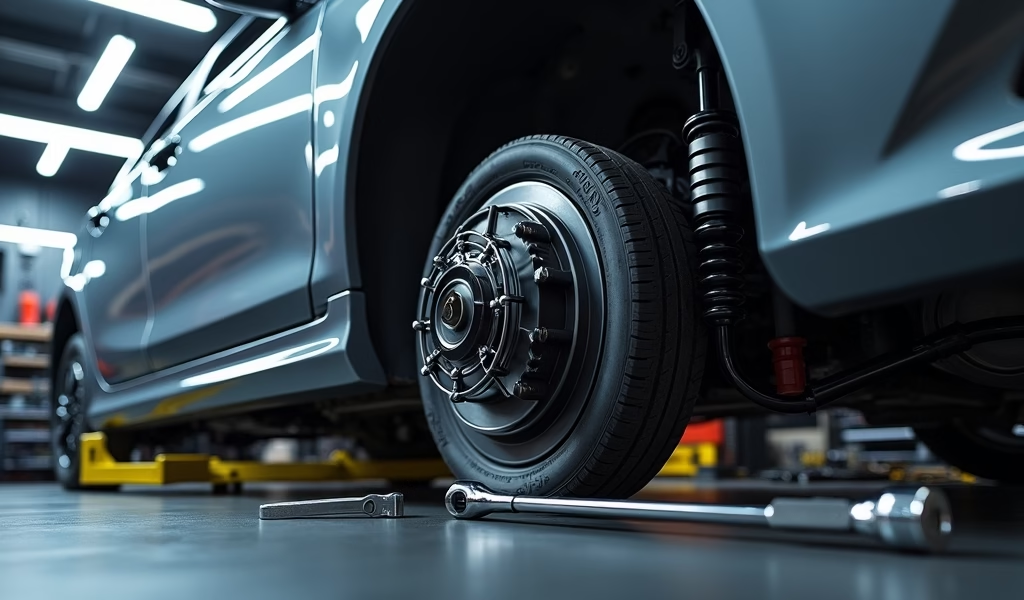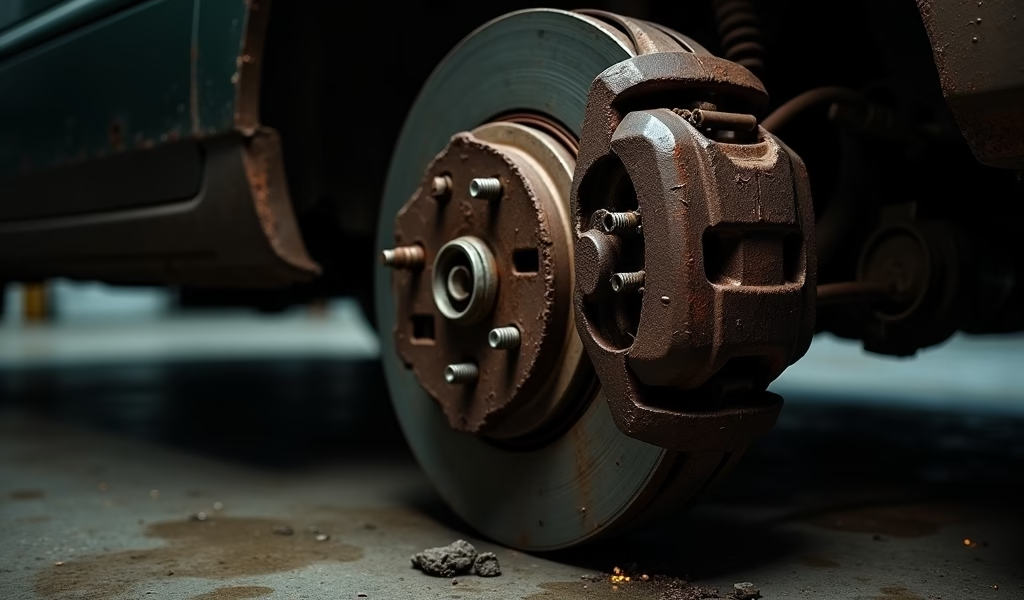Overview
This article presents five essential tips for maintaining proper parking brake equalization: regular inspection, cable adjustment, cleaning and lubrication, addressing mechanical issues, and professional calibration when needed. Proper parking brake equalization ensures balanced force distribution between rear wheels, preventing vehicle drift and potential safety hazards while extending the lifespan of braking components.
Table of Contents
- Introduction to Parking Brake Equalization
- Why Parking Brake Equalization Matters
- Signs of Uneven Parking Brake Performance
- Tip 1: Regular Inspection and Maintenance
- Tip 2: Proper Cable Adjustment Techniques
- Tip 3: Cleaning and Lubricating Components
- Tip 4: Addressing Mechanical Issues
- Tip 5: Professional Calibration When Needed
- DIY vs. Professional Service
- Conclusion
- Frequently Asked Questions
Introduction to Parking Brake Equalization
Let’s talk about something that doesn’t get enough attention in your vehicle maintenance checklist – parking brake equalization. As a mechanic with over 15 years under my belt, I can’t tell you how many times I’ve seen folks scratch their heads when their perfectly parked car decides to play a game of “slow roll” down a gentle slope. The culprit? Uneven parking brake force distribution.
Parking brake equalization refers to the balanced application of braking force to both rear wheels when you engage your parking brake. Think of it as making sure both your feet are applying equal pressure when trying to stop a rolling skateboard. When one side grips tighter than the other, you get uneven stopping power, potential vehicle drift, and in worst-case scenarios, a safety hazard that could have been easily avoided.
Throughout this guide, I’ll walk you through five proven tips for maintaining proper parking brake equalization. We’ll cover everything from basic inspections to advanced adjustment techniques, all explained in plain English – no mechanical jargon to decode. So grab your favorite beverage, and let’s make sense of this often-overlooked but crucial aspect of vehicle safety.
Why Parking Brake Equalization Matters
You might be wondering why I’m making such a fuss about parking brake equalization. Well, it’s not just about preventing your vehicle from rolling away when parked on an incline – though that’s certainly important enough! Proper equalization is fundamental to your vehicle’s overall braking system integrity.
When your parking brake applies equal force to both rear wheels, it creates a stable platform that keeps your vehicle exactly where you left it. Uneven application, on the other hand, can cause one wheel to lock while the other barely engages, potentially leading to your vehicle pivoting around the locked wheel. Over time, this imbalance puts excessive stress on your drum brake self-adjustment mechanism, wearing components unevenly and potentially leading to costly repairs.
Beyond the mechanical considerations, there’s also the safety aspect. According to the National Highway Traffic Safety Administration, properly functioning parking brakes are essential safety devices that prevent thousands of rollaway accidents annually. An equalized parking brake gives you peace of mind when parking on hills or when leaving your vehicle unattended, especially in areas with children or pets.
Furthermore, many states include parking brake function in their vehicle inspection requirements. Failing this portion of the inspection could mean the inconvenience of repeated visits to testing stations and additional repair costs that could have been avoided with regular maintenance.

Signs of Uneven Parking Brake Performance
Before diving into our tips, let’s make sure you can recognize when your parking brake isn’t equalizing properly. Catching these warning signs early can save you from more significant problems down the road – both literally and figuratively!
The most obvious sign is vehicle drift after engaging the parking brake. If you set the brake and your car still moves slightly, or worse, continues to roll, that’s a clear indicator something’s amiss. Another telltale sign is when your vehicle tends to pull to one side when the parking brake is applied. This lateral movement happens because one wheel is braking more effectively than the other.
Listen for unusual noises, too. A properly functioning parking brake should engage with a smooth, consistent ratcheting sound. Grinding, squealing, or uneven clicking noises suggest unequal tension or worn components that need attention. Pay attention to how the parking brake lever or pedal feels when you engage it. If it feels unusually loose, tight, or if the engagement point has changed, these tactile clues can indicate equalization problems.
I’ve also seen many drivers overlook another subtle sign – uneven wear patterns on rear brake shoes or pads. During your regular brake inspections, if you notice one side wearing faster than the other, uneven parking brake application might be the culprit. Now that we know what to look for, let’s jump into the solution territory with our first practical tip.
Tip 1: Regular Inspection and Maintenance
The foundation of proper parking brake equalization starts with regular inspections. Just like changing your oil or rotating your tires, your parking brake system needs consistent attention to perform reliably. I recommend inspecting your parking brake components at least twice a year, or more frequently if you regularly drive in hilly areas.
Start by checking the parking brake cables for any signs of fraying, rusting, or kinking. These cables are the lifelines of your system, and any compromise in their integrity will directly affect equalization. Examine where the cables connect to the brake mechanisms at each wheel. Look for equal tension on both sides when the brake is both engaged and disengaged.
Don’t forget to inspect the brake shoes (for drum brakes) or the dedicated parking brake shoes (for disc brake systems). Uneven wear patterns are clear indicators of equalization problems. While you’re there, check the adjustment mechanisms and springs for signs of weakness or excessive wear.
Additionally, test the brake handle or pedal movement. There should be a specific amount of free play before engagement – typically between 5-7 clicks on a hand lever or about 3-4 inches of pedal travel. Too much or too little travel suggests your system needs adjustment.
While performing these inspections, remember that preventative maintenance is always less expensive than reactive repairs. Taking these proactive steps might seem time-consuming, but they’re far less painful than dealing with a rollaway vehicle or failing a state inspection.
Tip 2: Proper Cable Adjustment Techniques
Now that we’ve covered inspection, let’s talk about one of the most effective ways to ensure proper equalization – cable adjustment. The parking brake cables in your vehicle should have equal tension when engaged, distributing braking force evenly between both rear wheels. Achieving this balance is a bit like tuning a guitar – it requires patience and precision.
First, ensure your vehicle is safely supported on jack stands if you’re going underneath it. Locate the parking brake equalizer, typically found under the vehicle where the single cable from your parking brake lever splits into two cables that run to each rear wheel. Most vehicles have adjustment nuts at this equalizer that allow you to fine-tune the tension.
To adjust properly, start with the parking brake fully disengaged. Check that both wheels can rotate freely. Then, tighten the adjustment nuts equally until you feel slight resistance when turning each rear wheel by hand. Next, engage the parking brake one click and verify both wheels have equal drag. If one wheel has more resistance than the other, you’ll need to make individual cable adjustments.
One technique I’ve found particularly effective is the “chalk mark method.” Make a small chalk mark on each rear tire, then engage the parking brake and attempt to rotate each wheel. The chalk marks should move the same distance on both sides, indicating equal braking force. If not, continue making small adjustments until you achieve balance.
Remember that the brake pedal free play adjustment is different from your parking brake adjustment – don’t confuse the two systems when making these modifications. When done correctly, proper cable adjustment can dramatically improve parking brake performance and equalization.
Tip 3: Cleaning and Lubricating Components
Over time, parking brake components can become caked with road grime, rust, and old lubricant that’s turned into a sticky mess. This buildup is often the hidden culprit behind uneven parking brake performance. In my experience, a thorough cleaning and proper lubrication can work wonders for restoring equalization – sometimes even better than mechanical adjustments.
Start by cleaning all accessible parts of the parking brake system. Use a quality brake cleaner for the metallic components and mechanisms. Pay special attention to the pivot points, levers, and where the cables connect to the brake assemblies. For stubborn dirt and rust, a wire brush can be your best friend, but be gentle around rubber components and seals.
Once everything is clean and dry, it’s time for strategic lubrication. I emphasize “strategic” because using the wrong lubricant or applying it in the wrong places can actually worsen your brake performance. Use a high-temperature silicone-based brake lubricant for the metal-to-metal contact points in the brake mechanism.
For the cables themselves, a light application of cable-specific lubricant will help them move smoothly through their housings. Be extremely careful not to get any lubricant on the brake friction surfaces – that’s the fastest way to render your parking brake useless! A good rule of thumb is: if it pivots or slides against another metal part, it needs lubrication; if it’s meant to create friction, keep it dry.
According to research from the Society of Automotive Engineers, proper lubrication can reduce operating friction in brake cable systems by up to 40%, leading to more consistent and even brake application. After lubricating, work the parking brake handle several times to distribute the lubricant evenly throughout the system.

Tip 4: Addressing Mechanical Issues
Sometimes, despite your best efforts with inspections, adjustments, and lubrication, parking brake equalization problems persist. When this happens, it’s time to look deeper into potential mechanical issues that may be affecting your system’s performance. These problems typically require more involved repairs but addressing them properly will ensure long-term reliability.
One common mechanical issue I encounter is seized or rusted brake components. In regions where road salt is used extensively, the parking brake mechanism can literally freeze in place. This often affects one side more than the other, leading to uneven braking. In severe cases, complete disassembly, cleaning, and sometimes replacement of the affected components is necessary.
Another mechanical culprit is worn return springs. These springs pull the brake shoes back after you release the parking brake. When they weaken or break, one side might remain partially engaged even when the brake is “off,” causing uneven wear and performance. Replacing these springs is relatively inexpensive but makes a world of difference in equalization.
Don’t overlook the self-adjusters either. Many modern vehicles have automatic adjusters for the parking brake that can malfunction. If yours isn’t working properly on one side, that wheel won’t receive the same braking force as the other. These mechanisms often need to be rebuilt or replaced to restore proper function.
For vehicles with integrated electronic parking brake systems, mechanical issues take on an additional dimension. These systems use electric motors and sometimes complex gear assemblies that can fail asymmetrically. In these cases, diagnostic equipment is often necessary to pinpoint the exact problem. The complexity of electronic parking brakes typically means these repairs are best left to professionals with the right tools and expertise.
Tip 5: Professional Calibration When Needed
While I’m a big advocate for DIY maintenance, there are times when professional calibration is the smartest move for your parking brake system. Modern vehicles, especially those with electronic parking brake systems, often require specialized equipment and software to properly calibrate the equalization parameters.
Professional calibration typically involves connecting diagnostic equipment that can measure the exact force being applied to each wheel during parking brake engagement. Technicians can then make precise adjustments to ensure perfectly balanced operation. This level of precision is particularly important for vehicles with integrated stability control systems, where the parking brake may be part of the emergency stopping capability.
Even for traditional mechanical parking brake systems, professional service might be necessary if you’ve exhausted your DIY options without success. Certified technicians have access to manufacturer-specific procedures and tooling that can address stubborn equalization issues. They can also perform a comprehensive system evaluation to identify less obvious problems that might be contributing to uneven performance.
When selecting a shop for this service, look for technicians who specialize in brake systems rather than general maintenance. Ask specific questions about their experience with parking brake equalization issues for your make and model. A good tech will be able to explain their diagnostic approach and the specific adjustments they plan to make.
The cost of professional calibration varies widely depending on your vehicle and location, but typically ranges from $80-$200. While this might seem steep compared to DIY adjustments, consider it an investment in safety and reliability – especially if you regularly park on hills or in areas where brake failure could have serious consequences.
DIY vs. Professional Service
Throughout this guide, I’ve shared several tips you can implement yourself, but you might be wondering: “When should I tackle parking brake equalization myself, and when should I call in the pros?” It’s a fair question, and the answer depends on several factors.
DIY maintenance is often appropriate for basic inspections, cable adjustments, and cleaning/lubrication. If you’re comfortable working on your vehicle, have the proper tools, and can safely lift and secure it, these tasks are within reach of most home mechanics. The advantages are clear: you’ll save money, gain valuable knowledge about your vehicle, and develop a feel for how your system normally operates.
However, there are definite scenarios where professional service makes more sense. If your vehicle has an electronic parking brake system, the calibration typically requires dealer-level scanning tools. Similarly, if you’ve tried basic adjustments without success, or if you discover significant mechanical issues like seized calipers or broken components, professional help will likely save you time and frustration.
Safety should always be your primary consideration. If you’re unsure about any aspect of the repair or don’t have proper equipment like quality jack stands, wheel chocks, or the correct tools, it’s better to leave it to the professionals. Remember that brake systems are critical safety components – there’s no room for “good enough” work here.
A middle-ground approach that I often recommend is doing the inspection and basic maintenance yourself, then consulting a professional if you identify specific issues beyond your comfort zone. This approach combines the cost savings and learning benefits of DIY with the security of professional expertise when needed.
Conclusion
Proper parking brake equalization isn’t just a mechanical nicety – it’s an essential aspect of vehicle safety and longevity. Throughout this guide, we’ve explored five proven strategies to ensure your parking brake delivers balanced, reliable performance when you need it most.
We started with the importance of regular inspection and maintenance, establishing a solid foundation for your parking brake system. We then explored cable adjustment techniques that fine-tune your system for optimal balance. Our third tip focused on the often-overlooked power of thorough cleaning and strategic lubrication, which can restore performance without major mechanical work.
For more persistent issues, we discussed addressing mechanical problems that might be lurking beneath the surface, from seized components to worn springs. Finally, we acknowledged that sometimes professional calibration is the most effective path to perfect equalization, especially for modern electronic systems.
Remember that maintaining proper parking brake equalization is an ongoing process rather than a one-time fix. Make these checks part of your regular maintenance routine, especially before road trips or seasonal changes that might affect your brake system. Your diligence will be rewarded with the confidence that comes from knowing your vehicle will stay exactly where you parked it – whether on a gentle incline or a steep hill.
By implementing these five proven tips, you’re not just ensuring your parking brake works correctly today; you’re extending the life of your entire braking system and protecting one of your most valuable assets – your vehicle. Safe driving starts with safe parking, and that begins with proper parking brake equalization.
Frequently Asked Questions
How often should parking brake equalization be checked?
Check your parking brake equalization at least twice a year, or every 6,000 miles. If you regularly park on hills or notice any changes in brake performance, increase this frequency to quarterly checks.
Can weather affect parking brake equalization?
Yes, extreme temperatures and moisture can significantly impact parking brake equalization. Cold weather can cause cables to contract and bind, while road salt and moisture lead to corrosion that creates uneven tension.
Is it normal for my parking brake to require different tension on different surfaces?
No, a properly equalized parking brake should hold your vehicle equally well regardless of surface. If you notice it holds better on some surfaces than others, this indicates an equalization issue that needs addressing.
Will fixing parking brake equalization improve my regular braking system?
While the parking brake is separate from your main braking system, addressing equalization issues can prevent uneven wear on shared components. This indirect benefit can improve overall brake performance and longevity.
How much does professional parking brake equalization typically cost?
Professional parking brake equalization service typically costs between $80-$200 depending on your vehicle type and location. Electronic parking brake systems tend to be on the higher end of this range due to specialized equipment requirements.

